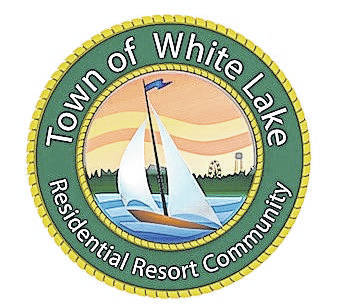WHITE LAKE — Twelve months of study are complete, and town commissioners were advised Tuesday their most valuable commodity needs regular monitoring and treatment, a plan for its long-term viability and the support of multiple stakeholders.
White Lake, troubled a year ago by a high pH conducive to algae growth, is doing better as the 41st annual Water Festival approaches in just more than a month. The extreme measure of an alum treatment in early May was just in time and necessary, researchers say, and data collection has yielded recommendations.
The term pH is a figure expressing the acidity or alkalinity of a solution on a logarithmic scale, on which 7 is neutral, lower values are more acid and higher values more alkaline. A higher pH in warm weather produces more algae on White Lake, as was the case last year.
A small audience of less than two dozen for the town of 800 year-round residents listened intently for about two hours as Dr. Chris Shank of the Bald Head Island Conservancy, Dr. Peter Zamora of UNC Wilmington Earth and Ocean Sciences and Dr. Diane Lauritsen of Limnosciences/Envirochem gave presentations of roughly 30 minutes each and then answered questions.
The trio did research in different areas, and was careful to assure the full scope of the lake’s health was not being presented. There were, for examples, several questions they presented with the confirmation the answers were not part of the goal for this year-long research. Their work did provide a bountiful amount of data that can be used as a baseline as the town takes steps to move forward from last year’s near disaster.
As Shank said, “It’s a complicated system to understand until you get the baseline.”
The town will likely continue to deal with multiple entities, such as the state Department of Environmental Quality, and will be able to bring the researchers’ science to the table in those discussions. The information could also be pivotal in funding requests, such as grants, for the steps the town needs to take in maintaining the lake’s health.
Lauritsen said when so many lakes became state-owned many years ago, little to no thought was given to the amount of attention they could require. DEQ doesn’t do recommendations, but it does take samples, she said. Many lakes are chemically sensitive and allowed to be let go, eventually turning green.
“They have algae problems every year,” she said. “We can’t allow that — it will crash and burn.”
White Lake is recreational, and the epicenter of this residential resort community. In the summer, the 800 population swells to tens of thousands. There’s little to no room for any more development on a lake that is roughly seven miles to go around, or about the distance to Elizabethtown which is intrinsically connected to White Lake’s commerce.
The trio did research on the lake’s water, groundwater around it, and the management of cyanobacteria, pH and nutrients in the lake. Their findings concluded that rather than being supplied by deep springs, the lake gets most of its water through rainfall.
Zamora said the amount of groundwater going into the lake annually was between 0.16 percent and 6.4 percent, or “very small.”
“It is not a groundwater-fed lake,” he said. “There is groundwater, but primarily from rainfall.”
And that rainfall, Lauritsen’s presentation said, has increasingly included more pH. Shank said the pH in rainfall from the ocean hasn’t changed over the years, but it can change regionally.
“I don’t think you’ll be able to introduce a large volume of low pH water that will offset high pH rainfall that is coming in,” Lauritsen said. “You won’t get the lower pH levels you had before. You have a narrower window. We have to have a plan.”
She said that plan is to create something that doesn’t yet exist here.
“Hopefully, with very effective people like Jim Perry involved we can start to conceptualize what we need,” Lauritsen said of the Lumber River Council of Government’s planner for special projects in the Community Economic Services branch. “We need the big players to come together — the town, the county, state parks, the COG. There are things that need to be done, like stormwater ordinances.”
Shank said the research showed many positives.
“We never saw a toxic sign of bacteria, and that’s important,” he said.
It also confirmed the worst-case news on hydrilla, an invasive nuisance of a plant.
“It was very low levels in 2017 to 2018, but we know it’s out there,” Lauritsen said. “Once hydrilla gets into a lake, it can be difficult to get rid of.”
Throughout all three presentations, there were talking points about the sediments and nutrients in the lake. Activities by boats stir up the sediments, and one frame of Lauritsen’s presentation posed a question about changing the uses of the lake to include boating restrictions. It also said “wakeboard boats are problematic,” stirring up sediments.
“The shallow lakes, the sediments are so close to the water column,” Lauritsen said. “Nutrients can be problematic, but also, White Lake doesn’t have a source of water like a stream or river feeding it. The flushing ability is very low. It essentially, what’s in the lake stays in the lake. Not much leaves. It does have to be a balance overall to have a healthy lake, healthy for recreation and water contact. We need to do everything we can to keep it that way. Hopefully standing on paddle boards will get more popular.”
Among the audience questions at the conclusion was the lower water level in the lake this spring. Womble assured the town is meeting state standards for the outfalls, such as at Turtle Cove. He said the town has not taken actions that would cause the water level to go down, and he knows of none to artificially increase the water level.


